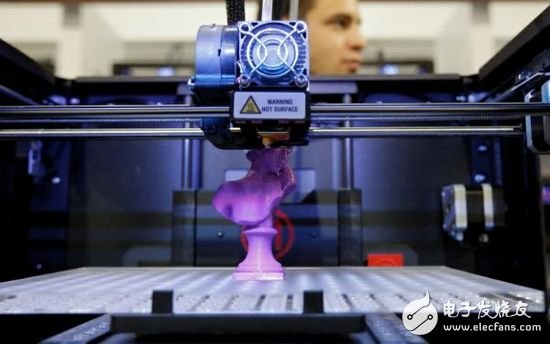In the medical field, where is the way out for 3D printing?
In September of this year, Peking University's research team successfully implanted a 3D printed spine for a 12-year-old boy, the first in the world. The boy's spine grew a malignant tumor after a football injury, and the doctor had to choose to remove the spine where the tumor was located. This time, instead of using a traditional spine transplant, the doctor used a 3D print to create a titanium skeleton.
3D printing shines in the medical world, it can accurately copy a variety of human tissues, organs and drugs, from the knee bone to the liver, from anticancer drugs to DNA... "New Yorker" even said that maybe one day humans can " Print yourself."
In the medical world, 3D printing seems to be a popular phenomenon, and schools, laboratories, and startups have favored this technology. However, from a rational point of view, there are still many questions to be resolved in the application of 3D printing in the medical field. Can the spine printed by Peking University have greater application value? Is 3D printing already popular in the medical world? In what stage is this technology now developed?

Michael Patton, CEO of Medical InnovaTIon, a US medical technology company, answered these questions for us. He summarized some basic facts and trends in the medical device industry.
New products, new products are needed
In the United States, there are more than 6,500 medical device companies, of which more than 80% are small companies with no more than 50 employees. These companies are streamlined and frugal, and they are high-risk capital-intensive hardware developers.
But what they do is far from being replaced by other hardware and software vendors. Medical devices don't track how far your car ran, not to send you TV shows, and all they do is change humans. For example, the production of liquids that allow wounds to heal faster, intelligent catheters that significantly reduce infection in patients with sepsis, and even the magical equipment for painless treatment of acne...
Despite these new trends, any industry faces challenges. EmergoGroup, a medical device consultancy, has published an annual report summarizing three major issues in the medical device industry: regulatory issues, funding sources, and product updates.
Among them, product update is the biggest problem. Compared with other industries, the equipment innovation rate in the medical industry is too slow, and there are too many devices that are needed to meet the pain points. However, this is also related to the high requirements of this industry. Compared with smart wearable devices, the production requirements of medical devices are too high. Therefore, the topic has to be pulled back to 3D printing, because it allows equipment manufacturers to manufacture engineering machines quickly and accurately.
The biggest meaning of 3D printing: production prototype
Although the spine bones produced by Peking University are exciting, 3D printing of biological organs is also a major trend, but in the medical field, the most important role of 3D printing is to produce medical device prototypes. Note that it is a prototype, not a production machine.
The biggest pain point for manufacturers of medical devices is that they want to experiment with product performance and service life as early as possible because medical equipment is very demanding. The sooner a prototype is produced, the sooner the manufacturer can improve the prototype, and then promote and use the new product. 3D printing has greatly improved R&D efficiency. This corresponds to the last of the three questions mentioned above: product updates.
In fact, with 3D printing, the other two problems are solved. Rapid prototyping machines facilitate inspection and feedback from regulatory authorities. Without 3D printing, this detection and feedback cycle is slow and lengthy.
Similarly, investors are more interested in companies with more prototypes. Imagine if hardware vendors can quickly iterate like software vendors, it will bring more interest and confidence to investors.
What happens next?
3D printing is in the ascendant in the field of medical devices. Next, there will be three changes that will directly affect the industry.
1. Standard and standard setting bodies.
When a lab makes drawings and needs to share it, it will find too many formats and standards, so the field of 3D printing prototypes looks like barbaric growth, no standard.
2. Open source design, configuration and software.
When there is a unified standard, the 3D printing industry will usher in open source. Nowadays, too many teams focus on improving their 3D printing level and developing in the closed loop of their own. In fact, the industry needs open source of devices and software to generate more useful, efficient, and open innovations under unified standards.
3. Prototype laboratory.
Prototype printing is not taken seriously, so many medical device manufacturers now place printing equipment in a dirty, dusty place. In fact, there are now commercialized 3D printing labs to help these companies print higher quality prototypes.
In summary, it is still too far to print the organ, and it is not realistic to use it widely in a short period of time. The best place for 3D printing to be used is to make other instruments. However, this industry lacks a strong standard. When standards are established, issues such as subsequent open source, funding, and management will not break. 3D printing may not save humanity, but it can help the medical community find ways to save humanity.
Cummins 76-200KW Diesel Generator
76-200Kva Diesel Generator,Silent Type Diesel Generator,Container Diesel Generator,Super Silent Diesel Generator
Shanghai Kosta Electric Co., Ltd. , https://www.shkostagenerator.com